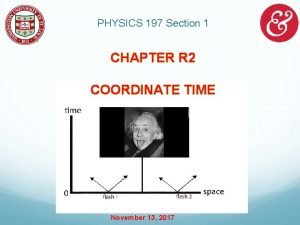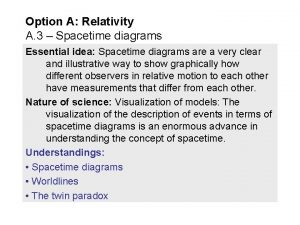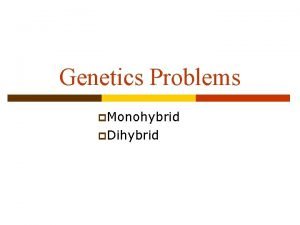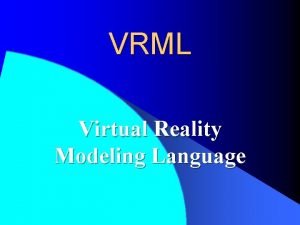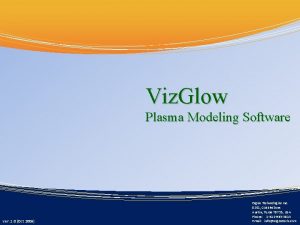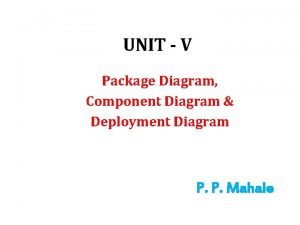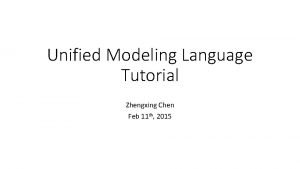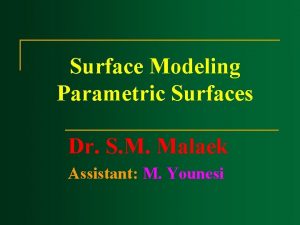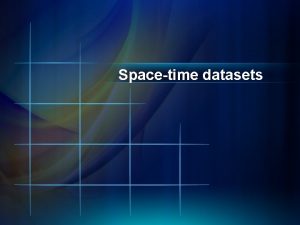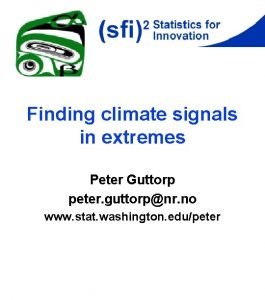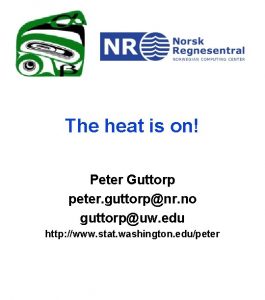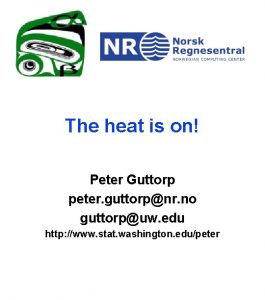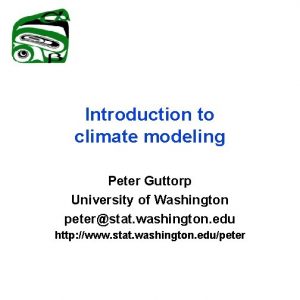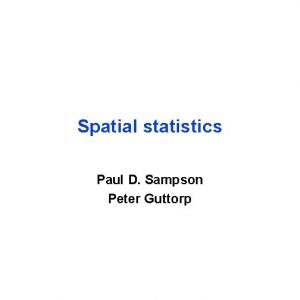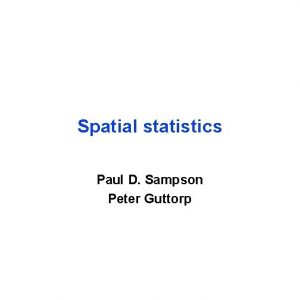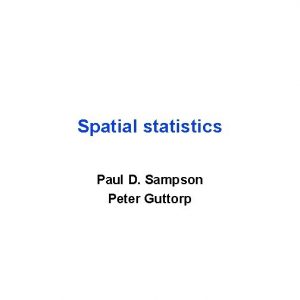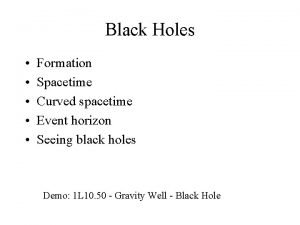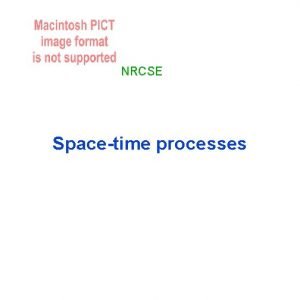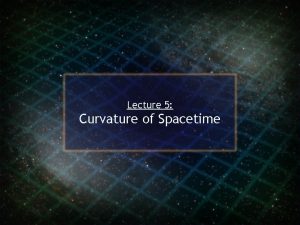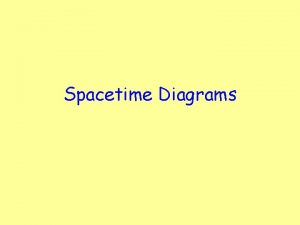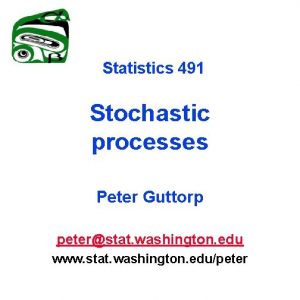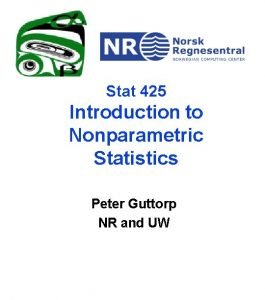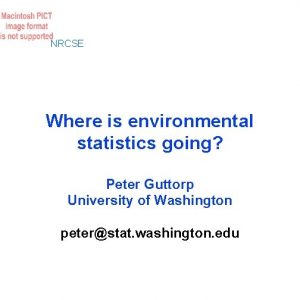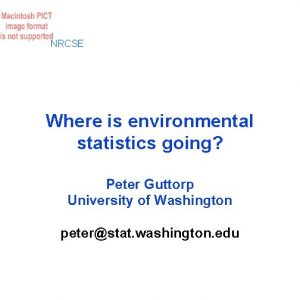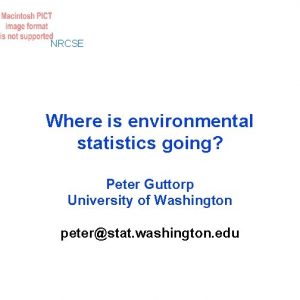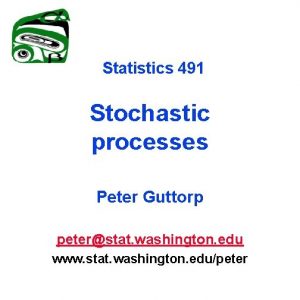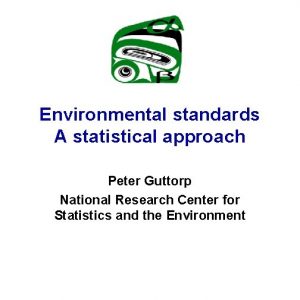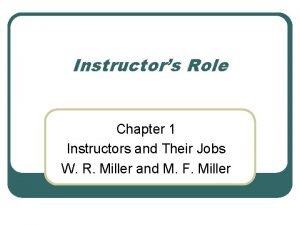Short course on spacetime modeling Instructors Peter Guttorp























- Slides: 23

Short course on space-time modeling Instructors: Peter Guttorp Johan Lindström Paul Sampson

Schedule 9: 10 – 9: 50 Lecture 1: Kriging 9: 50 – 10: 30 Lab 1 10: 30 – 11: 00 Coffee break 11: 00 – 11: 45 Lecture 2: Nonstationary covariances 11: 45 – 12: 30 Lecture 3: Gaussian Markov random fields 12: 30 – 13: 30 Lunch break 13: 30 – 14: 20 Lab 2 14: 20 – 15: 05 Lecture 4: Space-time modeling 15: 05 – 15: 30 Lecture 5: A case study 15: 30 – 15: 45 Coffee break 15: 45 – 16: 45 Lab 3

Kriging

The geostatistical model Gaussian process μ(s)=EZ(s) Var Z(s) < ∞ Z is strictly stationary if Z is weakly stationary if Z is isotropic if weakly stationary and

The problem Given observations at n locations Z(s 1), . . . , Z(sn) estimate Z(s 0) (the process at an unobserved location) or (an average of the process) In the environmental context often time series of observations at the locations.

Some history Regression (Bravais, Galton, Bartlett) Mining engineers (Krige 1951, Matheron, 60 s) Spatial models (Whittle, 1954) Forestry (Matérn, 1960) Objective analysis (Gandin, 1961) More recent work Cressie (1993), Stein (1999)

A Gaussian formula If then

Simple kriging Let X = (Z(s 1), . . . , Z(sn))T, Y = Z(s 0), so that μ X=μ 1 n, μ Y=μ, ΣXX=[C(si-sj)], ΣYY=C(0), and ΣYX=[C(si-s 0)]. Then This is the best unbiased linear predictor when μ and C are known (simple kriging). The prediction variance is

Some variants Ordinary kriging (unknown μ) where Universal kriging (μ(s)=A(s)β for some spatial variable A) where Still optimal for known C.

Universal kriging variance simple kriging variance variability due to estimating μ

The (semi)variogram Intrinsic stationarity Weaker assumption (C(0) needs not exist) Kriging predictions can be expressed in terms of the variogram instead of the covariance.

The exponential variogram A commonly used variogram function is γ (h) = σ2 (1 – e–h/ϕ). Corresponds to a Gaussian process with continuous but not differentiable sample paths. More generally, has a nugget τ2, corresponding to measurement error and spatial correlation at small distances.

Sill Nugget Effective range

Ordinary kriging where and kriging variance

An example Precipitation data from Parana state in Brazil (May-June, averaged over years)

Variogram plots

Kriging surface

Bayesian kriging Instead of estimating the parameters, we put a prior distribution on them, and update the distribution using the data. Model: (Z(s 1). . . Z(sn))T θ=(β, σ 2, φ, τ 2) T Matrix with i, j-element C(si-sj; φ ) (correlation) measurement error

Prior/posterior of φ

Estimated variogram Bayes ml

Prediction sites 1 3 2 4

Predictive distribution

References A. Gelfand, P. Diggle, M. Fuentes and P. Guttorp, eds. (2010): Handbook of Spatial Statistics. Section 2, Continuous Spatial Variation. Chapman & Hall/CRC Press. P. J. Diggle and Paulo Justiniano Ribeiro (2010): Model-based Geostatistics. Springer.
 Short short short long long long short short short
Short short short long long long short short short Spacetime coordinates review
Spacetime coordinates review Spacetime diagram examples
Spacetime diagram examples Time dilation
Time dilation De sitter spacetime
De sitter spacetime Motion pictures cone of experience
Motion pictures cone of experience Helen erickson nursing theory
Helen erickson nursing theory Dimensional modeling vs relational modeling
Dimensional modeling vs relational modeling Half brick wall
Half brick wall Course number and title
Course number and title Chaine parallèle muscle
Chaine parallèle muscle Fegans test
Fegans test Vein anatomy leg
Vein anatomy leg Understand quran short course 2 pdf
Understand quran short course 2 pdf Story short
Story short Heterozygous short-hair x heterozygous short-hair
Heterozygous short-hair x heterozygous short-hair Virtual reality modeling language tutorial
Virtual reality modeling language tutorial Plasma modeling software
Plasma modeling software Common modeling techniques of deployment diagram
Common modeling techniques of deployment diagram Unified modeling language tutorial
Unified modeling language tutorial Sd3 security framework
Sd3 security framework Surface modelling in cad
Surface modelling in cad Sequence diagram of restaurant management system
Sequence diagram of restaurant management system Simulation kelton
Simulation kelton

